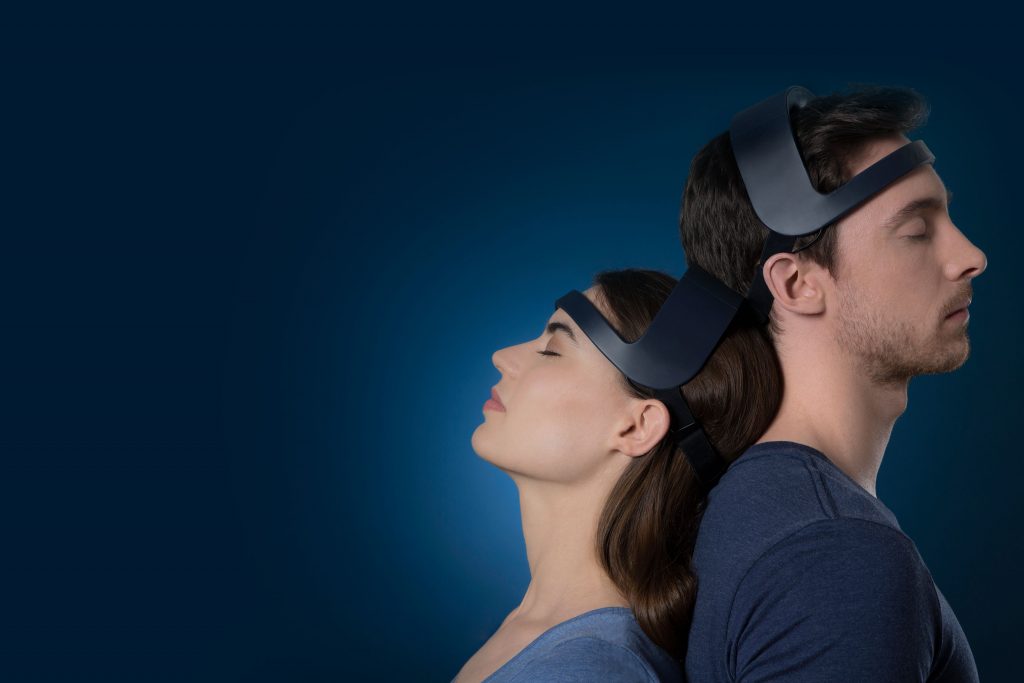No products in the basket.
Another exciting product discovered at CES 2019 in Las Vegas was Dreem. You might be surprised by the high number of people who suffer to catch their sleep or who wake up various times a night. Sleep disorders are unfortunately a common thing. An unhealthy thing also because sleep behavior disorder might result into stress disorders, a weakened immune system and memory problems. Sleep deprivation is a big issue in our current society. The people behind Dreem recognize this issue and decided to produce a lightweight headband, called Dreem, to enhance your quality of sleep. The head band combines some biometrics technology with bone conduction technology. Biometrics to analyse and monitor your sleep and bone conduction to omit sounds in a private way.

Dreem in detail
So, on the one hand Dreem consists of sensors similar to the sensors which can be found on other wearables. These sensors track your heart rate, movement, respiration and brain activity. The monitored data is analysed, and a real time enhancement is made, based on the biological signals of the user. Besides real time adjustments, there is a data track during the night which results in detailed reports on a daily, weekly and monthly basis. These reports tell you exactly how your nights looked like. When you woke up, when you were in a deep sleep, how long you slept,…
Based on the assessment of your sleep Dreem will propose a customized program, information and exercises to enhance your sleep sessions and your quality of life overall. Dreem itself promises to resolve your sleeping disorder within 6 to 8 weeks when following their Restructuring program.
The use of bone conduction in the Dreem headband
As stated before Dreem also makes use of bone conduction. Bone conduction is not only used to wake you up by means of a smart alarm but also to help you fall asleep faster. The Dreem Techniques uses a unique set of sounds to provide you a sound sleep. Bone conduction means the sound is not transmitted through the air but through the bones of your skill. This way the sound is directly sent (or vibrated) to your inner ear. It’s a unique sound transmission which has an additional benefit: privacy. If you would still prefer your classic headphones Dreem is also equipped with an audio jack.
Although we have contacted Dreem they have unfortunately not replied yet. As soon as we have got some more info from their side or who knows, a test model, we will let you know.
The Dreem website can be found here.

Wim Styleman is a content writer, translator, reviewer and bone conduction fanatic. Interested in the wonderful world of bone conduction since 2016. Driven by a desire to get everyone submerged into this wonderful technology, but critical and honest when he has to be as a reviewer. Only the best is good enough. He has traveled around the globe and visited various CES events. When he isn’t busy testing bone conduction devices or writing freelance translations, he is at his bike somewhere on the Belgian roads or on his touring skis somewhere in the Austrian or French Alps.

